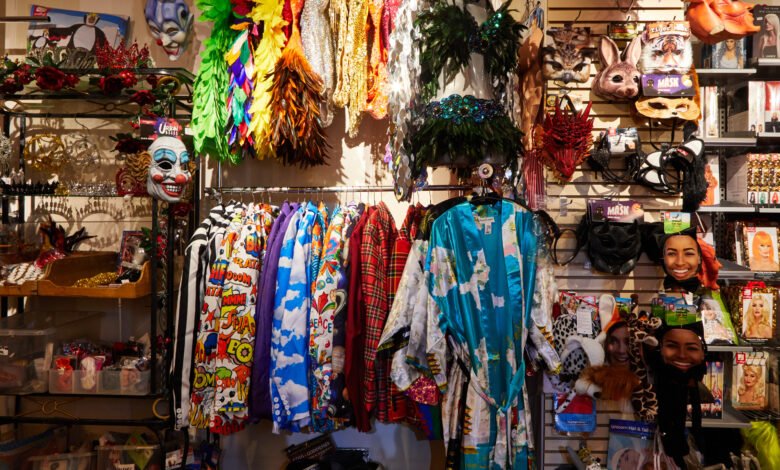
Fancy dress stores hold a special place in the retail world, blending creativity, fun, and nostalgia into one vibrant business model. From Halloween spook-fests and themed birthday parties to cosplay conventions and theatrical performances, the demand for unique costumes and accessories is evergreen. If you’re contemplating diving into the fancy dress business, this comprehensive guide will provide the essential steps and strategies to set up and run a successful fancy dress store.
Understanding the Market
1. Identifying Your Niche
Fancy dress stores cater to a broad spectrum of customers. To carve out your niche, consider focusing on specific themes such as:
- Historical Costumes: Perfect for school plays and educational events.
- Superheroes and Villains: Popular with comic book and movie fans.
- Mythical Creatures: Dragons, fairies, and other fantasy beings.
- Cultural and Traditional Attire: For international festivals and themed parties.
- Special Effects Makeup and Accessories: Ideal for professional actors and Halloween enthusiasts.
2. Market Research
Conduct thorough market research to understand trends and preferences. Analyze competitors to identify gaps in the market. Platforms like Google Trends, social media polls, and local surveys can provide valuable insights.
3. Target Audience
Your audience could range from individuals seeking costumes for personal use to event organizers and theater companies. Segment your audience into groups such as children, adults, professional cosplayers, or theater groups, and tailor your offerings accordingly.
1. Online Expansion
The digital age offers unprecedented opportunities for expanding your fancy dress store’s reach. Establishing a strong online presence can significantly boost your sales and visibility. Create a well-optimized e-commerce platform that is mobile-friendly and features secure payment options. Include high-quality images and detailed descriptions of your products to provide an engaging shopping experience. Integrate social media shopping features to allow customers to purchase directly from your social media pages. Leverage SEO and digital advertising to drive traffic to your site.
2. Partnerships and Collaborations
Forge partnerships with local event planners, photographers, and entertainment venues to cross-promote your services. Consider collaborations with influencers or popular local personalities who can showcase your costumes in a dynamic and relatable way. Host joint events or promotions to attract a broader audience.
3. Subscription Services
Introduce a subscription box service that delivers themed costumes and accessories monthly. This service can cater to customers who regularly attend events or those who simply enjoy dressing up. Offer various subscription levels to accommodate different budgets and interests.
4. Workshops and Classes
Host workshops on costume design, makeup application, or DIY costume creation. These events can drive traffic to your store, establish your brand as an authority in the fancy dress industry, and provide additional revenue streams.
5. Customer Reviews and Testimonials
Encourage customers to leave reviews and testimonials on your website and social media pages. Positive feedback can build trust and attract new customers. Highlight these testimonials in your marketing materials to showcase customer satisfaction and the quality of your products.
6. Sustainable Practices
With growing awareness around environmental issues, adopting sustainable practices can differentiate your store. Offer eco-friendly costumes and accessories, use recyclable packaging, and promote the recycling or repurposing of old costumes. Highlight these practices in your branding to appeal to eco-conscious consumers.
7. Adapting to Challenges
The retail landscape is constantly evolving, and flexibility is key to staying competitive. Be prepared to adapt your business model in response to market changes. For instance, during economic downturns, emphasize budget-friendly options or increase your rental offerings. During health crises, enhance your online presence and offer contactless delivery and pickup options.
8. Monitoring Performance
Regularly evaluate your store’s performance through metrics such as sales data, customer feedback, and inventory turnover. Use this data to refine your strategies, optimize your inventory, and improve customer satisfaction. Regular performance reviews will help you identify areas for improvement and opportunities for growth.
Setting Up Your Store
1. Business Plan
A solid business plan is crucial. Outline your business goals, target market, competition analysis, marketing strategies, and financial projections. This plan will serve as your roadmap and can also help attract investors or secure loans.
2. Location
Choose a location with high foot traffic, such as near schools, shopping centers, or entertainment districts. Consider the convenience of parking and accessibility. Alternatively, an online store can complement your physical presence or serve as your primary sales channel.
3. Store Layout and Design
The ambiance of your store should reflect the creativity and fun associated with fancy dress. Create an inviting and organized space with themed sections for different types of costumes. Use bright colors, engaging displays, and creative mannequins to showcase your inventory.
Sourcing Inventory
1. Wholesale Suppliers
Build relationships with reliable wholesale suppliers. Look for those who offer a wide range of costumes and accessories, including seasonal items. Attend trade shows to meet suppliers and negotiate better deals.
2. Custom-Made Costumes
Offering custom-made costumes can set your store apart. Partner with local designers or hire in-house talent to create unique pieces tailored to your customers’ specifications.
3. Rental Options
Include a rental service for high-cost or elaborate costumes. This option attracts customers who need a costume for a one-time event and are unwilling to purchase it outright.
Marketing and Promotion
1. Online Presence
Develop a robust online presence. Create a user-friendly website with e-commerce capabilities to reach a broader audience. Maintain active social media profiles on platforms like Instagram, Facebook, and TikTok to engage with potential customers through creative content and promotions.
2. Seasonal Campaigns
Capitalize on seasonal events like Halloween, Christmas, and major film releases with targeted campaigns. Offer discounts, organize in-store events, and create themed displays to attract more customers.
3. Community Engagement
Participate in local events such as school fairs, charity events, and conventions. Sponsor or host costume contests to generate buzz and increase brand visibility.
4. Loyalty Programs
Implement a loyalty program to reward repeat customers. Offer points for purchases that can be redeemed for discounts or free items. This not only encourages repeat business but also builds customer loyalty.
Customer Experience
1. Staff Training
Train your staff to be knowledgeable about your products. They should be able to offer recommendations, assist with fittings, and provide styling tips. Excellent customer service enhances the shopping experience and fosters repeat business.
2. Fitting Rooms
Provide spacious and well-lit fitting rooms. Offer mirrors and seating to make the try-on experience comfortable. Staff should be available to help customers with fittings and adjustments.
3. Personalized Service
Offer personalized services such as costume consultations, fittings, and alterations. This can significantly enhance the shopping experience and set your store apart from competitors.
Managing Finances
1. Pricing Strategy
Develop a pricing strategy that balances affordability with profitability. Consider offering tiered pricing for different quality levels, such as economy, standard, and premium costumes.
2. Inventory Management
Implement an efficient inventory management system. Track sales trends to ensure popular items are always in stock and manage seasonal inventory to avoid excess after holidays.
3. Budgeting
Create a budget that covers all aspects of your business, including rent, utilities, inventory, marketing, and salaries. Monitor your expenses regularly to ensure you stay within your financial plan.
Adapting to Trends
1. Keeping Up with Trends
Stay updated on costume trends through social media, pop culture, and industry publications. Be prepared to stock costumes from popular movies, TV shows, and video games.
2. Feedback and Adaptation
Encourage customer feedback to understand their preferences and areas for improvement. Adapt your inventory and services based on this feedback to meet evolving customer demands.
Conclusion
Running a fancy dress store can be both exciting and rewarding. By understanding your market, creating a unique and inviting store environment, and staying adaptable to trends, you can build a successful business that brings joy and creativity to your customers. Whether you’re starting small with a niche focus or aiming to create a broad-spectrum costume emporium, the key is to blend business acumen with a passion for fun and fantasy. Embrace the creativity that comes with this business, and watch your fancy dress store become a beloved destination for costume enthusiasts of all ages.



